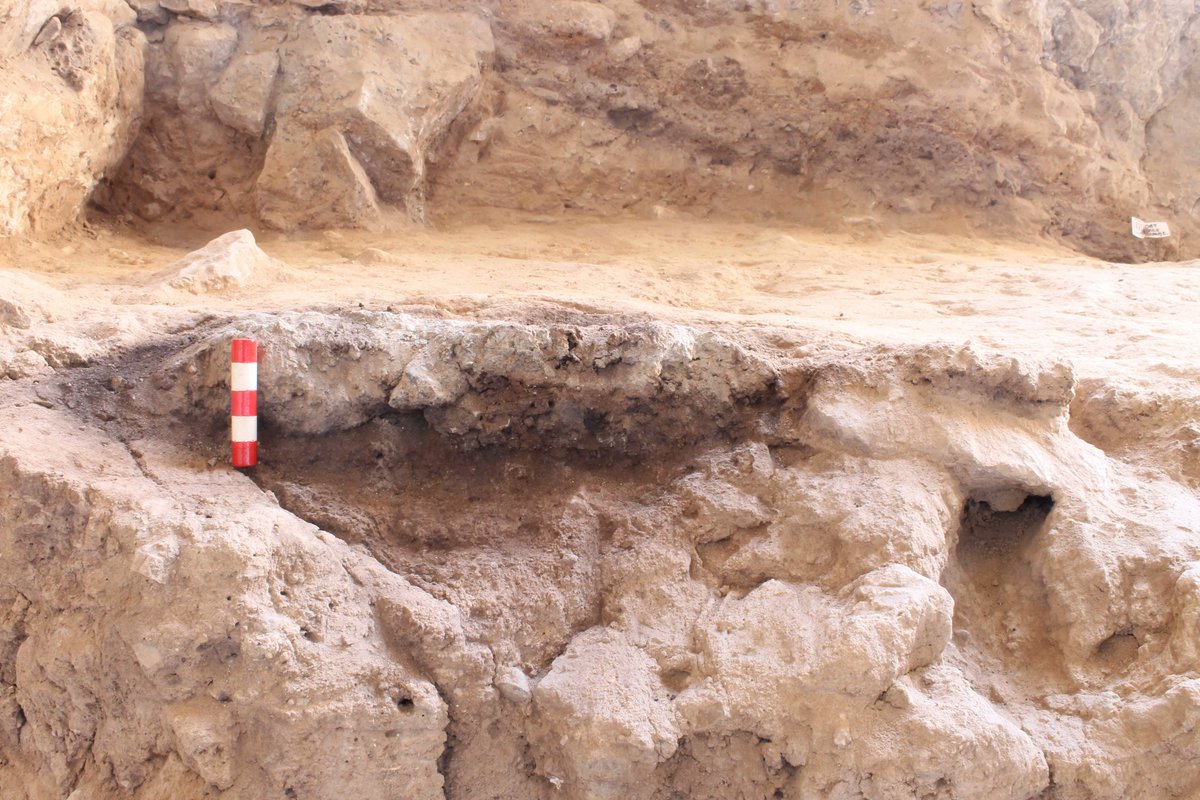
NEW: Archaeologists have identified two early churches in the Kingdom of Aksum, a major ancient power in Northeastern Africa. They are some of the first churches reliably dated to shortly after the Aksumite’s conversion to Christianity.
Here's an #AntiquityThread 1/15 🧵
Here's an #AntiquityThread 1/15 🧵

🌍 The Aksumite Kingdom ruled much of the northern Horn of Africa in the first millennium AD, stretching from Ethiopia to Arabia, and was an important contemporary of the Roman Empire. 2/15
📷: Extent of the Kingdom of Aksum by Aldan-2 / CC BY-SA 4.0
📷: Extent of the Kingdom of Aksum by Aldan-2 / CC BY-SA 4.0

✝️ Like their Meditternean neighbour, the Aksumite leader – King Ezana – converted to Christianity in the 4th century AD but securely dated churches from this period are rare. 3/15
📷: Coin of King Ezana by Classical Numismatic Group, Inc / CC BY-SA 3.0
📷: Coin of King Ezana by Classical Numismatic Group, Inc / CC BY-SA 3.0

⛪ However, two churches from the important Aksumite port of Adulis, in modern Eritrea, are helping fill this gap. One is an elaborate cathedral and was first excavated in 1868. The other, first excavated in 1907, once had a dome. 4/15
📷: Plan of Adulis
📷: Plan of Adulis

⛏️ Over a hundred years since these churches were first found, @Gab_Castiglia and a team of archaeologists are digging them back up with modern techniques and carrying out radiocarbon dating on the site, revealing their history. 5/15
📷: Excavations at the cathedral
📷: Excavations at the cathedral

🗨️ “This study provides one of the first examples of Aksumite churches excavated with modern methods and chronological data coming from modern dating methods,” said Dr Castiglia. 6/15
This revealed construction on the cathedral began AD 400-535 and the domed church was built AD 480-625, making them some of the earliest securely dated Aksumite churches and the oldest outside the heartlands. This shows the rapid spread of Christianity through the Kingdom. 7/15
🗨️ “Having a precise chronology for these churches is key to understanding how the process of conversion to Christianity shaped the geographical and cultural area,” said Dr Castiglia. 8/15
❗ Crucially, the buildings show that the spread of Christianity was not the result of a single factor, like a mandate by King Ezana. The churches have elements from many traditions, reflecting the diverse influences on the kingdom’s conversion. 9/15
The domed church, for example, is unique in the Aksumite Kingdom and appears to be inspired by Byzantine churches. Meanwhile, the cathedral is built on a large platform in the Aksumite tradition. 10/15
📷: The domed church under excavation
📷: The domed church under excavation

☪️ The churches can also shed light on the arrival of Islam. Adulis underwent a period of decline and the churches fell into disuse. But this was not the end of their lives – the cathedral was re-appropriated as a Muslim burial ground. 11/15
📷: Photogrammetry of the cathedral
📷: Photogrammetry of the cathedral

The continued use of existing sacred spaces could indicate the region’s conversion to Islam was also a multicultural phenomenon, with local customs mixed in with the new religion. 12/15
🗨️ “This is one of the first times we have the material evidence of re-appropriation of a Christian sacred space by the Islamic community,” said Dr Castiglia. 13/15
Together, these buildings show the religious history of the Horn of Africa was cosmopolitan, with diverse groups influencing the spread of beliefs. 14/15
📷: Alabaster slabs from the cathedral, which show a Syro-Palestinian influence
📷: Alabaster slabs from the cathedral, which show a Syro-Palestinian influence

📄 Read the full paper FREE:
An archaeology of conversion? Evidence from Adulis for early Christianity and religious transition in the Horn of Africa - Gabriele Castiglia
doi.org/10.15184/aqy.2…
15/15
🧵
An archaeology of conversion? Evidence from Adulis for early Christianity and religious transition in the Horn of Africa - Gabriele Castiglia
doi.org/10.15184/aqy.2…
15/15
🧵

• • •
Missing some Tweet in this thread? You can try to
force a refresh
















